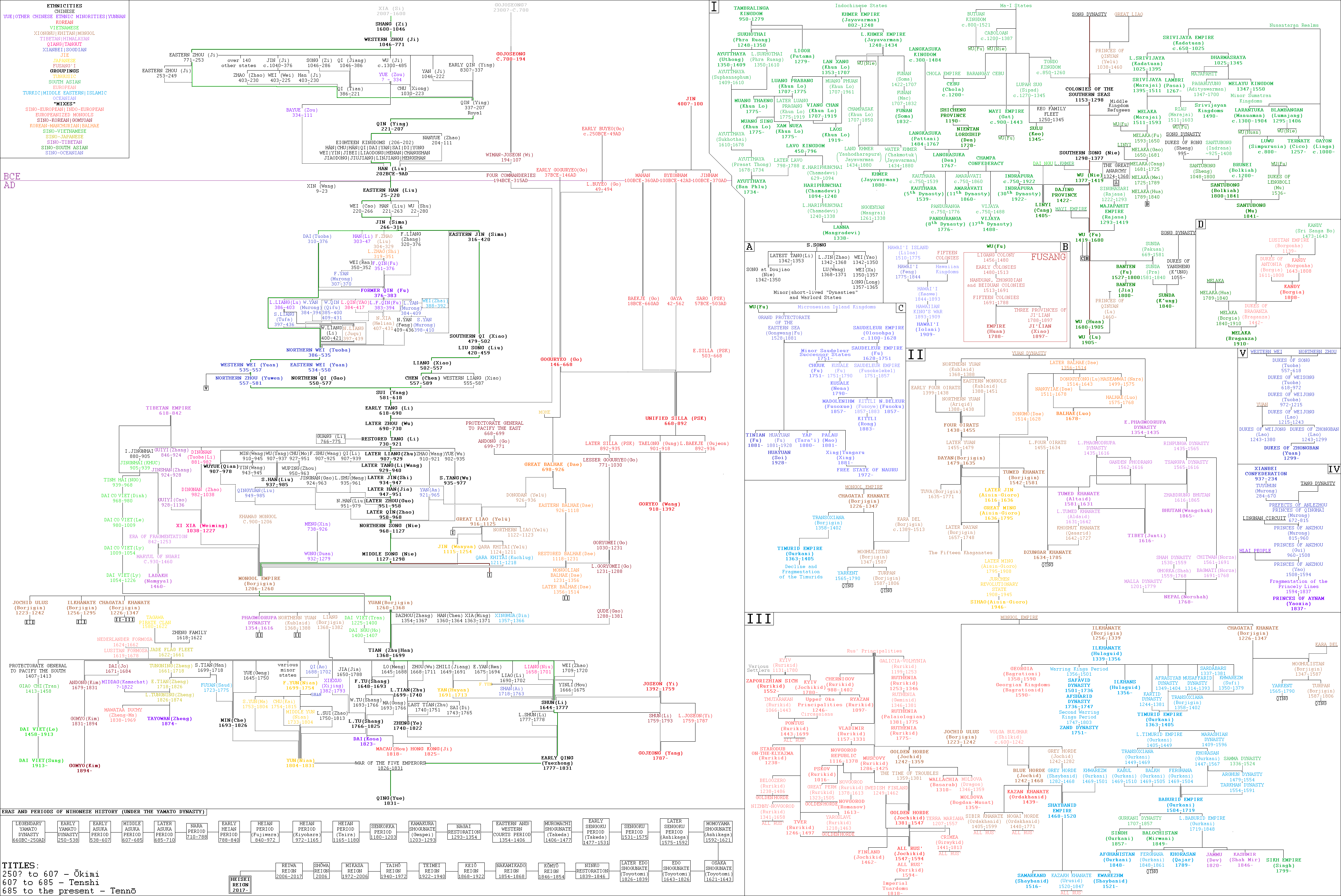HOME | DD
 GPMAsss2 — A Family Tree of Dynasties
GPMAsss2 — A Family Tree of Dynasties

#genealogy #alternatehistory #china #familytree #tangdynasty #wuzetian
Published: 2021-01-11 16:03:11 +0000 UTC; Views: 6494; Favourites: 29; Downloads: 8
Redirect to original
Description
This is a bit of a different update than my normal fare that I have been doing since early December, showing an alternate history TL mostly through a "genealogy" of dynasties, states and titles.Although I started it with the earliest states of China and Korea (which were the initial parts of the genealogy that spiraled out of control from that), the alternate history only comes into play after the Tang Dynasty, as the "original" POD was that Wu Zetian managed to hold to her throne and be succeeded by her daughter, the Princess Taiping, forevermore changing gender roles and inheritance in China (although for my own pleasure a made two earlier very small POD related to two royal houses and the Xianbei still existing). The tree goes all the way to "Present", at around 2040.
LEGEND (Because with this thing's size I think it's important)
Every "member" is composed of three main traits: the name of the state/title in CAPS; the name of the ruling dynasty (if it is a monarchy) between parentheses; and the period in which said state (or the period in which it was under a specific dynasty) existed. There are also some other possible traits, with states in bold meaning that they either were major powers or that they are still existing while if the member isn't in CAPS it means a collection of states.
The lines connecting each thing, in turn, also serve to show the way they are connected: if the line is a straight black one, it means the state bellow succeeded or was in some way established by the one above; if it is a dotted black one, it means that the one bellow conquered the one above; if a member is circled by a dotted line and connected to another by it, it means that the circled one was a rebellion/civil war/separatist state that was subjugated; finally, the straight green and red lines represent the Chinese Mandate of Heaven, with the green being the one on China proper and the red one being its "southern branch".
As with the lines, the colors of the members reflect mostly their ethnicity in a rough way (it may even be only referring to the ruling house and not the entire country, but mostly its the entire state), with it either being a specific one (although colors may serve for more than one ethnicity for convenience) a group (mostly geographical, but it may be linguistic) or a "mix" (which represents that the culture of the state/dynasty is a mix between two groups, and the farther you go it is probably a unique ITTL ethnic group). Grey represents a semy-mythological or just plain mythological state
The division of the tree into blocks is mostly geographical (and for convenience to make the tree visually smaller), with the blocks representing:
- The main one mostly represents China, Korea and Vietnam
- Just under it the tree represents the periods and some of the rulers of the Yamato Dynasty during the time period of the tree (which is the one that says what it is and is different from the others due to me needing something to fill the blank bellow the main tree (all parts of it are black because since it is about a very small topic I didn't see the need, and because the yellow is hard to see when in contrast with white)
- "I" mostly represents South Asia, while its "sub-blocks" of A, B, C and D comprise, in order: the states of the Great Anarchy of Southern Song, a large scale multi-sided civil war; the descending states in Fusang (Western North America) and Hawaii; Oceania; and a small tangent involving the state of Malacca and some European and Indian dynasties.
- "II" represents Mongolia, the Himalayas , Manchuria and parts of Central Asia, and has some overlapping appearances with...
- "III", which represents both Central Asia as well as Eastern Europe, the Middle East and Northern India. After that are the two finishers...
- "IV" and "V", the weirder ones of the group that basically show two separate noble lines descending from the Xianbei peoples, the first representing a line of nobles descending from the rulers of Northern Wei while the second shows the main ethnic descendant of the Xianbei and their ruling dynasty, which started in Northern China but migrated all the way to Hainan over time. These two existing are also the only pre-Wu Zetian pods, happening during the early Tang
Related content
Comments: 3

👍: 1 ⏩: 0

👍: 1 ⏩: 1

👍: 1 ⏩: 0

























